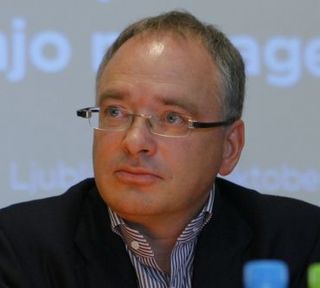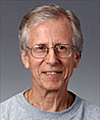Related Research Articles
Michael L. Hecht is a researcher in the field of human communication, emphasising the areas of interpersonal and inter-ethnic relationships, identity, and adolescent drug resistance. In 1973, Hecht earned his M.A. from Queens College, City University of New York and his Ph.D. I in communications from the University of Illinois Urbana-Champaign. He is now Liberal Arts Research Professor of Communication Arts and Sciences and Crime, Law, and Justice in the Department of Communication Arts and Sciences at Penn State University. He has previously been full professor at Arizona State University.

Problem solving is the process of achieving a goal by overcoming obstacles, a frequent part of most activities. Problems in need of solutions range from simple personal tasks to complex issues in business and technical fields. The former is an example of simple problem solving (SPS) addressing one issue, whereas the latter is complex problem solving (CPS) with multiple interrelated obstacles. Another classification is into well-defined problems with specific obstacles and goals, and ill-defined problems in which the current situation is troublesome but it is not clear what kind of resolution to aim for. Similarly, one may distinguish formal or fact-based problems requiring psychometric intelligence, versus socio-emotional problems which depend on the changeable emotions of individuals or groups, such as tactful behavior, fashion, or gift choices.
Diane F. Halpern is an American psychologist and former president of the American Psychological Association (APA). She is Dean of Social Science at the Minerva Schools at KGI and also the McElwee Family Professor of Psychology at Claremont McKenna College. She is also past-president of the Western Psychological Association, The Society for the Teaching of Psychology, and the Division of General Psychology.
John Robert Anderson is a Canadian-born American psychologist. He is currently professor of Psychology and Computer Science at Carnegie Mellon University.
Organization–public relationships is public relations between an organization and the public.
Mood management theory posits that the consumption of messages, particularly entertaining messages, is capable of altering prevailing mood states, and that the selection of specific messages for consumption often serves the regulation of mood states.
James Renwick Taylor, sometimes known as Jim Taylor, was a Canadian academic and Professor Emeritus at the Department of Communication of the Université de Montréal, which he founded with Annie Méar and André H. Caron Ed.D in the early 1970s.

Dejan Verčič is a communication researcher and public relations theorist.
Reinforcement theory is a limited effects media model applicable within the realm of communication. The theory generally states that people seek out and remember information that provides cognitive support for their pre-existing attitudes and beliefs. The main assumption that guides this theory is that people do not like to be wrong and often feel uncomfortable when their beliefs are challenged.
George Mandler was an Austrian-born American psychologist, who became a distinguished professor of psychology at the University of California, San Diego.
Charles M. Reigeluth is an American educational theorist, researcher, and reformer. His research focuses on instructional design theories and systemic transformation of educational systems to be learner-centered: personalized, competency-based, and largely project-based.
Excitation-transfer theory purports that residual excitation from one stimulus will amplify the excitatory response to another stimulus, though the hedonic valences of the stimuli may differ. The excitation-transfer process is not limited to a single emotion. For example, when watching a movie, a viewer may be angered by seeing the hero wronged by the villain, but this initial excitation may intensify the viewer's pleasure in witnessing the villain's punishment later. Thus, although the excitation from the original stimulus of seeing the hero wronged was cognitively accessed as anger, the excitation after the second stimulus of seeing the villain punished is cognitively assessed as pleasure, though part of the excitation from the second stimulus is residual from the first.
However, the excitation-transfer process requires the presence of three conditions. One: the second stimulus occurs before the complete decay of residual excitation from the first stimulus. Two: there is the misattribution of excitation, that is, after exposure to the second stimulus, the individual experiencing the excitation attributes full excitation to the second stimulus. Three: the individual has not reached an excitatory threshold before exposure to the second stimulus.

Robert S. Wyer Jr. is a visiting professor at the University of Cincinnati and professor (emeritus) at the University of Illinois, Urbana-Champaign. He received his doctoral degree from the University of Colorado. Wyer Jr.'s research interests cover various aspects of social information processing, including knowledge accessibility, comprehension, memory, social inference, the impact of affect on judgment and decisions, attitude formation and change, and consumer judgment and decision-making.

Howard Charles Wainer is an American statistician, past principal research scientist at the Educational Testing Service, adjunct professor of statistics at the Wharton School of the University of Pennsylvania, and author, known for his contributions in the fields of statistics, psychometrics, and statistical graphics.
The Excellence theory is a general theory of public relations that “specifies how public relations makes organizations more effective, how it is organized and managed when it contributes most to organizational effectiveness, the conditions in organizations and their environments that make organizations more effective, and how the monetary value of public relations can be determined”. The excellence theory resulted from a study about the best practice in public relations, which was headed by James E. Grunig and funded by the Foundation of the International Association of Business Communicators (IABC) in 1985. Constructed upon a number of middle-range theories, and tested with surveys and interviews of professionals and CEOs in the United States, the United Kingdom, Canada, and South Korea, the Excellence theory provides a “theoretical and empirical benchmark” for public relations units.

Richard M. Perloff is an American academic. He is professor of communication at Cleveland State University, where he has taught since 1979. He has written on persuasion, on political communication, on the psychology of perception of the effects of mass media, and on the third-person effect.
Larissa A. Grunig is a public relations theorist and feminist, and she is known as one of the most published and influential scholars in public relations. A professor emerita at the University of Maryland, College Park, Department of Communication, Grunig taught public relations and communication research since 1979. Based on a content analysis of three academic journals from their foundation through the year 2000, Grunig was recognized as one of the five most prolific authors contributing to public relations theory development. Her research focuses on public relations, development communication, communication theory, gender issues, organizational response to activism, organization power and structure, ethics, philosophy, scientific and technical writing, and qualitative methodology.
Introduced by William Benoit, image restoration theory outlines strategies that can be used to restore one's image in an event where reputation has been damaged. Image restoration theory can be applied as an approach for understanding both personal and organizational crisis situations. It is a component of crisis communication, which is a sub-specialty of public relations. Its purpose is to protect an individual, company, or organization facing a public challenge to its reputation.
Marianne Dainton is a scholar of interpersonal communication and a Professor in Communication at La Salle University in Philadelphia, Pennsylvania. Dainton has made substantial contributions to the communication field with several publications concerning relationship maintenance and personal relationships. In addition to her research, Dainton has contributed to mainstream press stories for the CBS Morning Show, Wall Street Journal, and The Philadelphia Inquirer concerning relationship maintenance. As an author, she is widely held in libraries worldwide.
Kathleen S. Kelly is an American public relations theorist and academic administrator. She is a professor and chair of the department of public relations at University of Florida. Kelly was the Hubert J. Bourgeois Research Professor in Communication at University of Louisiana at Lafayette. She served as associate dean of the Philip Merrill College of Journalism. Kelly is a Fellow of the PRSA.
References
- The Handbook of Public Relations (2001).
- 1 2 Curriculum vita, University of Maryland. Accessed July 16, 2017
- ↑ WorldCat item entry
- ↑ ] "The Four Models of Public Relations". Archived from the original on 2010-03-12. Retrieved 2010-03-02.
- ↑ WorldCat item record
- ↑ Worldcat item record